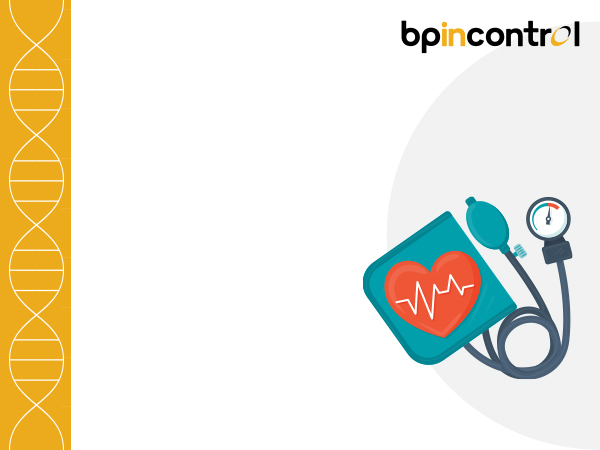Pericarditis: Types, Symptoms, Causes, Diagnosis & Treatment

Table of Contents
The human heart, an intricate masterpiece of anatomical engineering, is shielded by a remarkable defence mechanism known as the pericardium. This delicate, double-layered membrane envelops the heart, providing vital protection and support. However, there are instances when this shield becomes inflamed, leading to the development of a complex and intriguing condition called pericarditis.
You must be stuck with the surfing question – “what is pericarditis?” In this article, we will answer all your questions , delving into its multifaceted aspects, including its causes, symptoms, and the diverse range of treatment options available. Together, we will understand the challenges it presents within the symphony of the human cardiovascular system.
What is Pericarditis?
Pericarditis is a medical condition characterised by the inflammation of the pericardium, a thin and flexible sac that encloses the heart. This sac serves as a protective barrier, shielding the heart from external forces and providing it with a lubricated surface to facilitate smooth and frictionless movement. When the pericardium becomes inflamed, it can disrupt the normal functioning of the heart and cause discomfort or pain.
The inflammation of the pericardium can result from various factors, such as infections, autoimmune disorders, trauma, or certain medical conditions. The intricate nature of the pericardium and its close proximity to the heart make pericarditis a condition that requires careful attention and prompt medical intervention.
Types of Pericarditis
Pericarditis can manifest in various forms, each characterised by distinct features and underlying causes. Let us explore the various types of pericarditis:
- Acute Pericarditis: This is the most common form of pericarditis and is typically of sudden onset. It is often caused by viral infections, such as the common cold or influenza. Acute pericarditis can also be triggered by bacterial or fungal infections, autoimmune disorders, or as a result of a heart attack. The symptoms may include chest pain, fever, and a friction rub heard through a stethoscope.
- Recurrent Pericarditis: As the name suggests, recurrent pericarditis involves repeated episodes of inflammation and symptoms. It may occur after an initial episode of acute pericarditis or develop independently. The underlying cause of recurrent pericarditis is not fully understood, but it is thought to be related to autoimmune factors or viral persistence. Symptoms may recur periodically, with variable intensity and duration.
- Chronic Pericarditis: Chronic pericarditis refers to persistent inflammation of the pericardium that lasts for more than three months. It can result from various causes, including autoimmune disorders, tuberculosis, radiation therapy, or previous episodes of acute or recurrent pericarditis. The symptoms of chronic pericarditis may be less pronounced than in acute forms but can still include chest pain, fatigue, and shortness of breath.
- Constrictive Pericarditis: Constrictive pericarditis is a rare but serious form of the condition. It occurs when chronic inflammation leads to the thickening and scarring of the pericardium, causing it to lose its elasticity. As a result, the heart’s ability to fill and pump blood efficiently is compromised. The symptoms of constrictive pericarditis may include swelling in the legs and abdomen, fatigue, and exercise intolerance. It requires specialised management, often involving surgical intervention.
Symptoms of Pericarditis
Let’s explore the common symptoms associated with pericarditis:
- Chest pain (sharp, stabbing, or pressing)
- Difficulty breathing or shortness of breath
- Fatigue or weakness
- Low-grade fever (below 100.4°F or 38°C)
- Dry cough
- Palpitations (awareness of heartbeats)
- Lightheadedness or fainting
- Swelling in the legs and abdomen or shortness of breath every time you exert yourself can be a symptom of constrictive pericarditis, a severe type of pericarditis that can lead to symptoms of congestive heart failure.
Causes of Pericarditis
Pericarditis can have numerous underlying causes, and identifying the root of the inflammation is essential for effective treatment. Here are a few causes:
- Viral infections
- Bacterial or fungal infections
- Autoimmune disorders
- Heart attack
- Trauma or injury to the chest
- Cancer
- Radiation therapy
- Certain medications or drugs
- Kidney failure
- Metabolic disorders
- Underlying medical conditions, such as lupus or rheumatoid arthritis
Diagnosis for Pericarditis
The diagnostic process includes:
- Medical history and physical examination: Your doctor will ask about your symptoms, medical background, and potential risk factors. The doctor will also conduct a complete physical exam, listening for the recognisable “pericardial rub” sound and looking for any indications of fluid buildup.
- Chest X-ray: This imaging test helps evaluate the size of the heart and detect any fluid in the lungs.
- Cardiac MRI and CT scan: These imaging tests offer thorough details regarding the pericardium, cardiac function, and the presence of inflammation or fluid buildup.
- Cardiac catheterization: This invasive procedure measures the filling pressures in the heart and can help confirm a diagnosis of constrictive pericarditis.
- Echocardiogram: Echocardiogram is a non-invasive examination that creates pictures of the heart using sound waves, enabling visualisation of the pericardium, evaluation of cardiac function, and identification of fluid around the heart.
- Electrocardiogram (ECG): An ECG records the heart’s electrical activity and can show characteristic changes in heart rhythm associated with pericarditis.
- Blood tests: These examinations measure inflammatory markers such as the C-reactive protein (CRP) and sedimentation rate (ESR), which aid in excluding other illnesses and determining the pericarditis’s primary cause.
Treatment for Pericarditis
The treatment for pericarditis includes:
- NSAIDs: Ibuprofen or aspirin to reduce pain and inflammation.
- Colchicine: Used in combination with NSAIDs to reduce inflammation and prevent recurrences.
- Corticosteroids: Prescribed if NSAIDs and colchicine are ineffective, to reduce inflammation (short-term use).
- Pericardiocentesis: Draining fluid from the pericardial sac to relieve pressure on the heart.
- Antibiotics or antiviral medications: If pericarditis is caused by an infection.
- Treating underlying causes: Addressing underlying conditions like autoimmune disorders or cancer.
- Rest and symptom management: Resting, avoiding exacerbating activities, and using pain relievers for symptom relief.
In a Nutshell
To sum up, Pericarditis is a condition characterised by inflammation of the pericardium. Prompt diagnosis and effective treatment are essential to manage pericarditis and prevent complications. If you are experiencing symptoms, it is important to seek medical attention and follow the recommended treatment plan.
When it comes to finding the right physician to address your pericarditis or any other health concerns, BPinControl’s “Find a Physician” online portal is here to assist you. Through our user-friendly platform, you can easily search and connect with experienced physicians in your area who specialise in pericarditis management, chronic hypertension or any such medical condition.
FAQs
1. How serious is pericarditis?
The severity of pericarditis can vary depending on its underlying cause and individual factors. In most cases, pericarditis is a self-limiting condition and resolves with appropriate treatment. However, in some instances, complications such as recurrent episodes, chronic pericarditis, or constrictive pericarditis can occur, which may require additional management.
2. Is pericarditis a form of heart attack?
No, pericarditis is not a form of heart attack. While both conditions involve the heart, they are distinct entities. Pericarditis refers to the inflammation of the pericardium, the protective sac around the heart, whereas a heart attack, or myocardial infarction, involves a blockage of blood flow to the heart muscle itself.
3. Does pericarditis show on ECG?
Yes, pericarditis can show specific changes on an electrocardiogram (ECG). These changes can include ST-segment elevation in multiple leads, PR-segment depression, and T-wave inversion. These ECG findings, along with clinical symptoms and other diagnostic tests, can help in the diagnosis of pericarditis.
4. Can pericarditis cause sudden death?
Pericarditis is generally not life-threatening, but severe cases can lead to serious complications. Prompt medical attention and treatment are important to prevent these complications.
5. What foods should be avoided with pericarditis?
No specific foods need to be universally avoided in pericarditis. It is recommended to follow a balanced, heart-healthy diet and limit high-sodium and saturated fat foods that can contribute to fluid retention and inflammation. Consultation with a healthcare professional or dietitian can provide personalised dietary guidance.
Disclaimer
The information contained in this article is to educate, spread awareness in relation to hypertension and other diseases to the public at large. The contents of this article are created and developed by BPinControl.in through its authors, which has necessary, authorisations, license, approvals, permits etc to allow usage of this articles on The Website. The views and opinions expressed in this article are views, opinions of the respective authors and are independently endorsed by doctors. Although great care has been taken in compiling and checking the information in this article, The Website shall not be responsible, or in any way liable for any errors, omissions or inaccuracies in this article whether arising from negligence or otherwise, or for any consequences arising therefrom. The content of this article is not a substitute for any medical advice. The Website shall not be held responsible or liable for any consequence arising out of reliance on the information provided in the article.


Comments (0)
No comments found.Add your comment